In the realm of Linux, the term Update Package pertains to a fresh edition or release of a software package that can be installed on a Linux system. Here, the term Package refers to a pre-assembled collection of software that includes all the essential files and instructions needed to install and operate an application. Software updates provide the system with access to new features and improvements. In this tutorial, I will explore updating packages in Linux with its importance and learn how to edit the packages in Linux distributions.
Key Takeaways
- Learning about package management tools in Linux.
- Achieving knowledge about the importance of updating packages for Linux.
- Knowing how to update packages in Linux distros.
- Having the core insight of updating packages and the impact of them in different methods.
- Getting hints about the upcoming problems you may face while updating packages in your system with solutions.
Requirements
- You need to have a functioning package manager installed on your system to update packages, such as apt for Ubuntu, Yum for Fedora, etc.
- As updating packages frequently involves making changes to system files and configurations, it’s badly necessary for the user to have administrative (root) privileges.
- You must verify that your repository configuration is accurate and the repositories are accessible.
- You have to accommodate the updates with enough free disk space in your system in case of updating large software packages.
Why Do You Need to Update Packages in Linux?
Software developers distribute updates in the form of packages when they make improvements, fix bugs or apply security updates to their applications, resulting in the release of new versions. It’s healthy and essential to keep packages up to date regularly for several reasons:
- Security: Updates consist of security patches to address vulnerabilities. Ensuring your software is up-to-date safeguards your system against potential risks or cyber-attacks.
- Stability: Updates improve the stability and performance of your system by addressing and resolving bugs and glitches.
- Features: Updates of packages include new features and versions of the software which improves the user experience.
- Compatibility: Updating packages ensures the software remains in sync with the most recent libraries, dependencies, and the overall Linux ecosystem.
Linux Commands to Update All Packages in Various Linux Distributions
The Linux commands for updating all packages differ based on the specific package manager employed by each Linux distribution. Below are the update commands for some popular distributions:
1. APT (Advanced Package Tool)
It’s a package management system predominantly for Debian-based Linux distributions including Debian itself, Ubuntu, and Linux Mint.
2. YUM (Yellowdog Updater, Modified)
It is a package management utility for Red Hat Enterprise Linux (RHEL), CentOS, Fedora, and other distros. You can check the following yum commands to update packages in your RedHat-based distros:
A. Check Update
To check available updates for the installed packages on your system you can run the following command:
sudo yum check-updateIt’ll query for available updates in the configured software repositories.
B. Update All packages
To update all the packages in Red Hat-Based Linux distributions, you can run the following command:
sudo yum updateC. Update Specific Package
To update a specific package using ‘yum,’ you can run the following command with root privilege:
sudo yum update package_nameAfter execution of the command, yum will search for an available update for the specific package, and if so, a prompt will appear asking your permission to proceed. You type Y and press ENTER and yum will download and install the latest version of the mentioned package.
3. RPM Package
RPM stands for Red Hat Package Manager. It serves as a package management system that contains tools to install, and upgrade software packages on Linux systems.
To update an RPM package on Red Hat-based Linux distributions, you can execute the following command:
sudo rpm -Uvh package_name.rpmThe -Uvh option serves to either update the package it’s already installed or install it if it’s not present in the system.
4. Emerge
The primary package manager in Gentoo Linux is called “emerge” which serves as the tool for software package installation, updates, and removal. It represents the ultimate command-line interface for the Portage system.
5. zyper
The zyper serves as a command_line package manager designed for SUSE Linx, enabling users to install, update, and uninstall packages on their systems.
6. slackpkg
In Linux, ‘slackpkg’ acts as a package management tool utilized for the management of software packages in Slackware Linux distributions.
In this table, I’ve summarized all the packages for specific Linux distributions to have a compact look.
| Linux Distribution | Command to Update |
|---|---|
| Ubuntu / Debian | apt/apt-get |
| Fedora | yum |
| Gentoo | emerge |
| Suse/ OpenSUSE | zyper |
| SlackWare | slackpkg |
| RHEL | rpm |
In this article, I’m going to demonstrate the process of updating packages specifically in the Ubuntu distribution.
3 Cases to Update Packages in Ubuntu
Updating packages is the most fundamental prerequisite to keeping your system secured and stable. You can update your Ubuntu system’s packages following the three cases described below according to your need.
Case 01: Update a Single Package in Ubuntu
In this section, I’m going to show you how to update any one specific package in the CLI (Command Line Interface) of the Ubuntu distro. You can follow the steps below:
Steps to follow >
➊ Open the terminal in Ubuntu.
➋ At first, check for available updates for installed packages on your system.
sudo apt list --upgradable

Though it’s huge information, it’ll be easier if I break down the highlighted line from the list:
Now, choose the package you need to update from here and follow the rest of the steps to update packages.
➌ Run the command to update a single package.
sudo apt --only-upgrade install python3.11
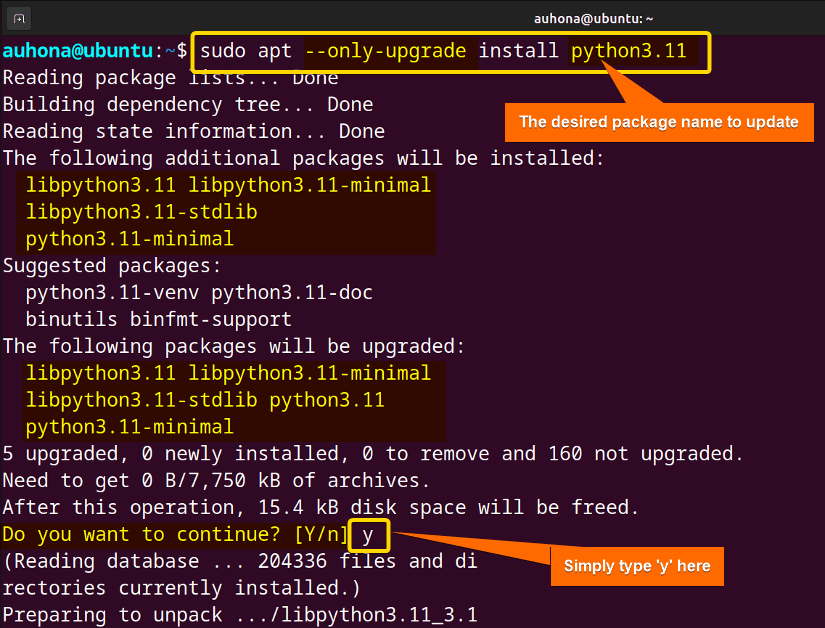
Case 02: Update Selected Packages on Your System
It follows the same path as the single package update with a little modification in the command which is:
sudo apt install --only -upgrade <package1> <package2> <package3>
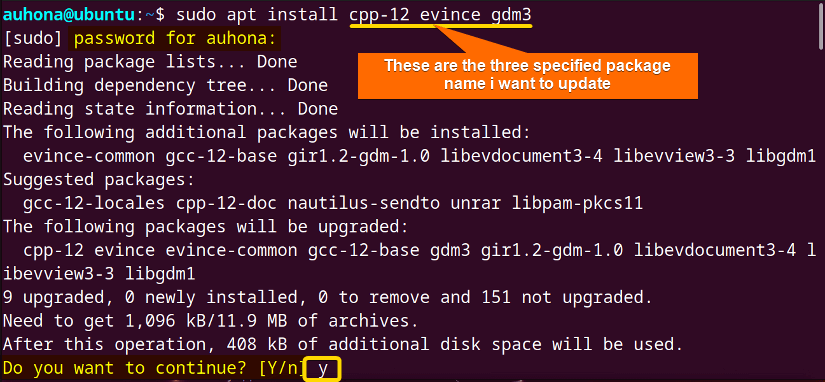
Case 03: Update All Packages in Your Ubuntu Distro
To update all the packages that require updates, you can use either CLI (Command Line Interface) or GUI(Graphical User Interface). You can follow both of the methods below.
Method 01: Using CLI to Update All Packages
It’s easier to update all the packages using a single command at the terminal as stated below.
Steps to Follow >
➊ Open the terminal in Ubuntu.
➋ Now, execute the following command to refresh the package index.
sudo apt update
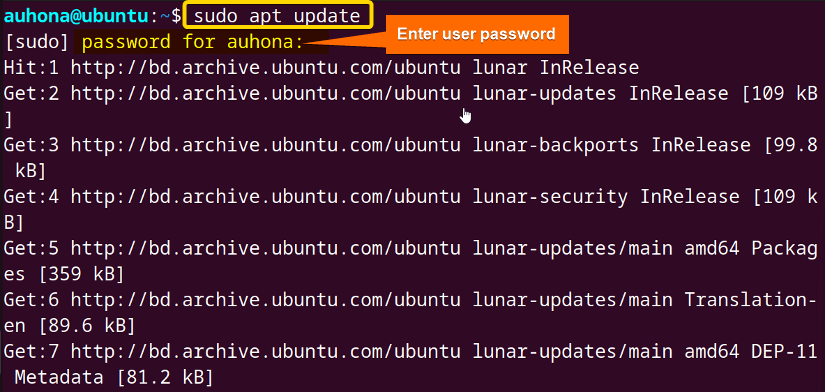
➌ To obtain available package updates, use the below command.
sudo apt upgrade➍ Though it’s optional, you can run the following command to clean up and free disk space by removing unnecessary packages that were installed as dependencies for other software. There is no functional difference between the ‘sudo apt update’ and ‘sudo apt-get update’ commands as both of them update packages in Linux. It’s just apt command is the newer and user-friendly interface whereas apt-get is the older and more traditional command line tool. If you want to proceed with the updating of your packages at GUI (Graphical User Interface) then follow the steps accordingly demonstrated below. Steps to follow > ➊ Go to the search bar in the menu and search for “software Updater” and run that. To ensure a secure and up-to-date environment, it’s essential to update packages in Linux routinely. But while updating the packages, users may encounter some common problems. Here are some of the issues that may arise while updating packages in Linux: There exist some common troubleshooting steps to fix the above-mentioned issues: You can also check for firewall or security software, disk space, or other software conflicts that may hinder the apt update command or apt-get command to perform accordingly. In the Linux system, though it’s kind of a ritual to update the packages, It’s not always necessary to use the apt-cache regularly. Nevertheless, the apt-cache command becomes more useful and even necessary in certain circumstances, especially for advanced users, and developers. To get Package information, dependency analysis, and troubleshooting, apt-cache keeps an impactful role. Similarly, setting up a proxy for package updates is crucial when your system is protected by a network proxy or firewall that prevents direct internet access. To download updates and packages from remote repositories for your package manager, proxy setup ensures your connection to the internet.; In Linux, the ‘apt-cache’ command queries the package cache and is used to look up package names and packages cache which contains metadata about available software packages. It is also used to keep track of software dependencies. apt-cache command allows you to access package information without installing them. Some common apt-cache commands are listed below: A proxy server serves as an intermediary between your computer and the internet and redirects your network request. You must configure a proxy server with the apt command if your computer is behind a proxy server. If this is not done, ‘apt’ won’t be able to access the internet or get updates from the repositories. In this article, I have narrated a comprehensive perspective about updating packages in Linux that includes the necessary commands to update your packages in different distributions of Linux, and three cases of updating packages. This article provides you with an elaborate explanation and solution to some frequently faced problems by users while updating the package. Here, I’ve shown how to update your packages using both CLI and GUI for your convenience. I hope this essay has been worth your time and has given you the perspective you were looking for. Related Articles << Go Back to Package Management in Linux | Learn Linux Basics
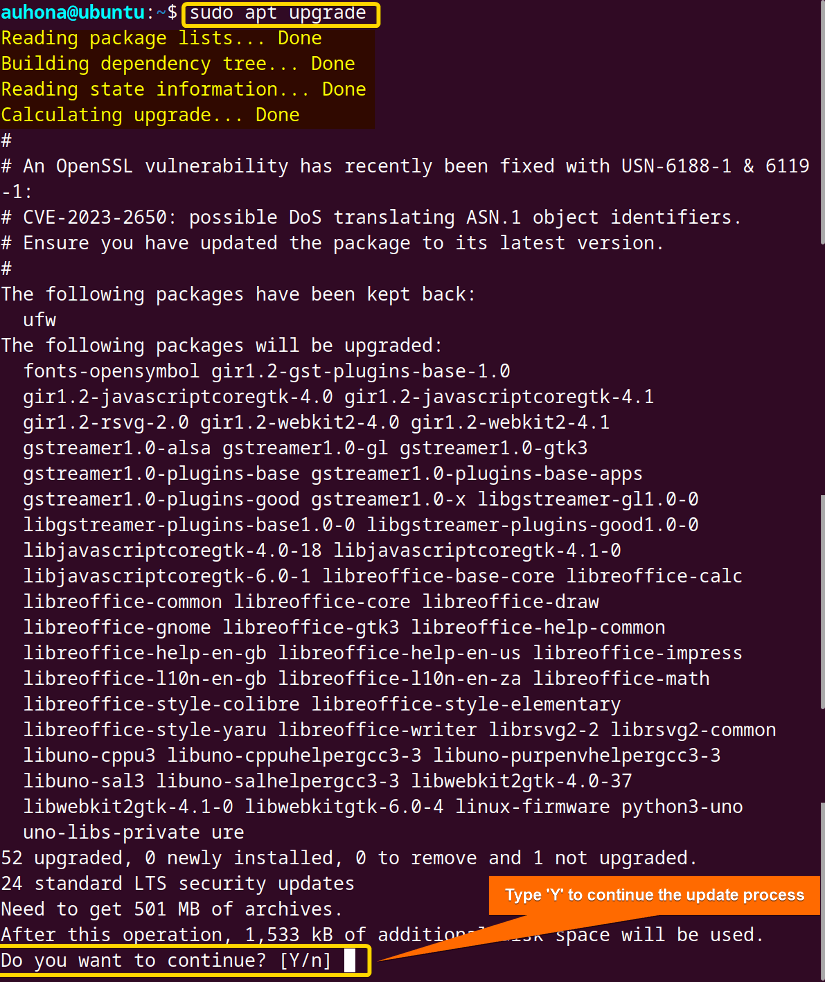
sudo apt autoremove

Method 02: Using Package Updater [GUI Tool] to Update All Packages
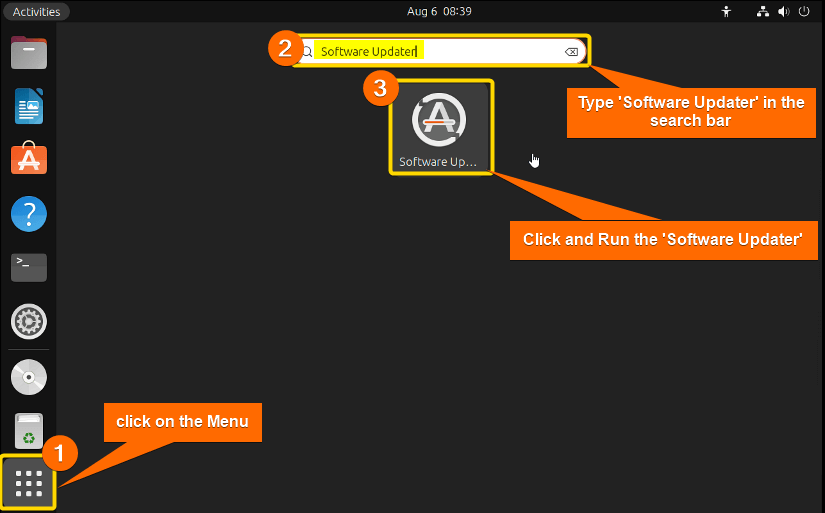


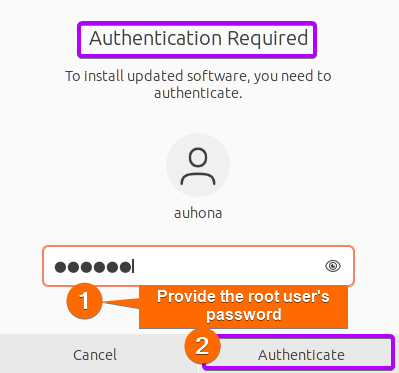


Problems You Might Face While Updating Packages in Linux
Complementary Information Related to Update Packages in Linux
A. The apt-cache Command in Linux
Command
The Function of the Command
sudo apt-cache <pkgnames>
Lists all the packages installed.
sudo apt-cache showpkg <PackageName>
Shows detailed information about a package.
sudo apt-cache show <PackageName>
Displays basic information about a package
sudo apt-cache search <PackageName>
Searches for specific packages.
sudo apt-cache depends on <PackageName>
Shows package dependencies.
B. Configure Proxy for the apt Command
Conclusion
People Also Ask
FUNDAMENTALS
A Complete Guide for Beginners




